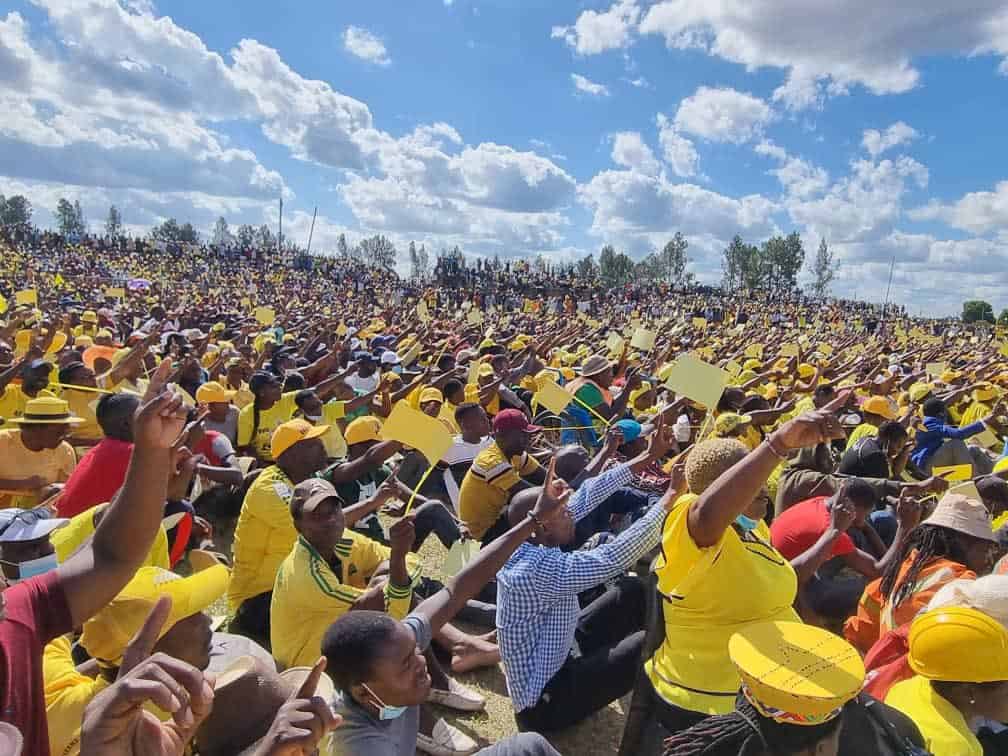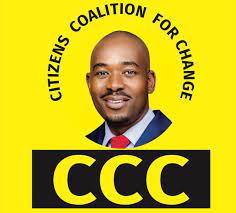In a deplorable move that is bound to damage the credibility of the looming nationwide by-elections set for this Saturday, the Nelson Chamisa-led Citizens Coalition for Change (CCC) party has made sensational allegations against the Zimbabwe Electoral Commission (Zec)- accusing the poll-governing body of altering its party symbols ahead of the explosive Saturday 26 March vote.
Ian Makone, who is the CCC national secretary for elections told Zec Chief Elections Officer Utoile Silaigwana in a March 21 letter that the opposition party was also concerned over the printing of ballot papers in back and white colours- perceptibly to confuse Chamisa’s “yellow” voters on election day.

This, Makone said, was albeit the fact that the CCC had provided the electoral-governing Zec with distinctive samples of its symbols.
According to the widely-subscribed opposition party, its symbols had an inscription of a “yellow square background, circular words surrounding Chamisa’s face with letters CCC inside a black triangle”.
And, in light of the suspicious move by the bungling Zec which has often been accused of tampering with the voters’ roll to skew the vote in favour of President Emmerson Mnangagwa’s ruling Zanu PF, Makone said:
“…the CCC wishes to express its concern regarding the variation in its party symbol”.
The yellow background, he said, is not reflected on the party logo as witnessed by the party candidates during the ballot paper verification exercise.

Added Makone (pictured above):
“The sample ballot paper is not an exact depiction of our party intent, hence a violation of our party identity. It is in this regard that Zec considers such concerns seriously and rectifies them as per the requirements of the law of the land.”
While addressing journalists in Harare yesterday, Makone said his party had written to Zec on February 24
demanding answers over the printing of ballot papers.
“What we wanted from them was an assurance that there is a process of consultation even at local level and district multi-party liaison officer which enables us to proofread the specimen ballot papers. They never got an opportunity to do that and only found that a number of our candidates could not even recognise the picture that is on the ballot paper. We need to know which voters roll will be in use on Saturday”.

The revelations came at a time when Zec has been taken to task over a number of anomalies on the voters roll, among them the alleged transfer of over 170 000 voters from their wards without their consent. The commission has, however, disputed the allegations, claiming the alleged anomalies were picked from a “leaked” draft roll, and have since been rectified.
The printing of ballot papers in the past elections has always been shrouded in secrecy, raising concerns over credibility of the polls,
In his response following a series of tweets emanating from the concerns raised by the CCC, Zec publicist Jasper Mangwana said they had no obligation to print ballot papers in colour.
Said Mangwana in comments posted on his Twitter handle:
“Zec is not obliged to print ballot papers in colour/s that correspond to contesting candidates or parties. The applicable provisions that relate to printing of the ballot paper are in section 52A of the Electoral Act and section 5 of the Electoral Regal SI 21 of 2005,” Mangwana said in a series of tweets following concerns raised by the CCC that its symbols had been tampered with.
“The sections do not at all bind the commission to print any ballot papers in the manner the party is alleging. What is important is to distinguish the colour of the ballot paper depending on the type of election as envisaged by section 5 of the electoral regulations. The law does not require the commission to print the photograph or symbol of the party in colour. It is unfortunate that the party went on to educate its supporters without consulting with the commission on the contents and form of (the) ballot paper.”
According to Zec, a total of 594 300 ballots have been printed for the by-elections.

According to the body, ballots for the National Assembly elections were printed by state-owned entity, Fidelity Printers and Refiners while Printflow, another government-controlled institution, printed the ballot papers for local authority elections.
A total of 813 659 people were registered to vote for National Assembly elections while 678 260 were registered for local authorities’ by-elections.
Zimbabwe Election Advocacy Trust executive director Ignatius Sadziwa told NewsDay that the secrecy surrounding the printing of ballot papers made verification and auditing difficult.
“The issue of the ballot printing has been contentious for quite a long time and we had hoped that Zec was going to address it this time around. Now that is problematic since the printing process is shrouded in shadowy secrecy making verification and auditing by political parties and civil society difficult,” Sadziwa said.
Zimbabweans are expected to cast their ballots in 28 vacant parliamentary seats and 105 local authority seats.
The seats fell vacant due to different reasons which include deaths of some legislators, recall of MDC Alliance legislators and councillors by Douglas Mwonzora’s MDC-T and diplomatic postings.
Zwnews













